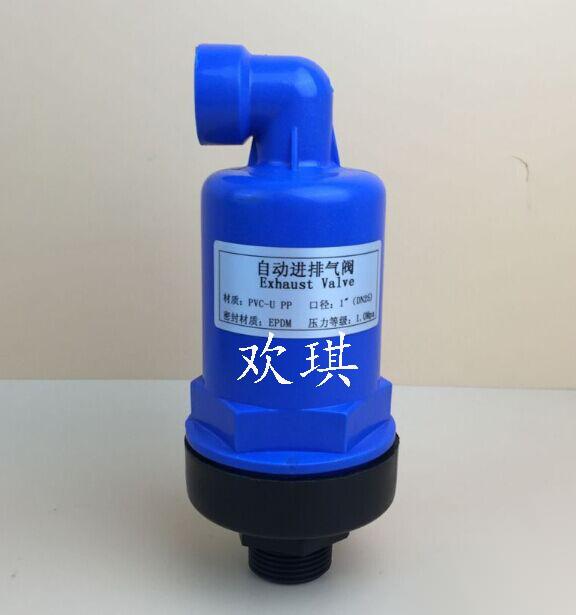The vacuum air valve is a powered rapid exhaust and intake valve suitable for various irrigation system applications. When the system is filled with water, the air valve discharges a large amount of air from the pipeline; when the system is emptied, the air valve draws in a large amount of air to prevent vacuum negative pressure.
The valve features advanced composite gas dynamics design, providing rapid exhaust and intake; it can avoid air accumulation and prevent negative pressure formation, while maintaining good sealing performance at low pressure.
Product Features and Benefits:
Compact size, simple structure, and reliable performance.
The valve body employs a direct flow channel design with large intake and exhaust ports, allowing for high flow rates.
The sealing float has a long movement stroke to prevent the float from being blown up by high-speed air currents, which could cause premature closure of the exhaust port, and it does not affect air intake or exhaust.
Low-pressure dynamic sealing - maintains good sealing even at low pressures (0.3bar), preventing leakage.
All components are corrosion-resistant, requiring low maintenance frequency and offering a long service life.
Working Principle:
During the water filling process, a large amount of air is rapidly discharged from the intake and exhaust port; after water enters the air valve chamber, the float rises with the liquid level and closes the rapid intake and exhaust port. The valve body design conforms to gas dynamics, and the anti-blow-up float design prevents the float from being blown up by high-speed air currents before water enters the air valve, thus avoiding premature closure of the exhaust port.
When the system is emptied, a negative pressure difference is formed, pushing the float downward. The powered rapid intake and exhaust port opens, allowing air to enter the air valve, preventing vacuum formation within the system.
In a pressurized state, the intake and exhaust valve remains closed.
Product Applications
1. Irrigation system pipeline: Discharges air from the irrigation system to avoid negative pressure in downstream water pumps, along transportation pipelines, and at pipeline slopes.
2. Irrigation head: Discharges air to prevent negative pressure at the filter and fertilizer tank.
3. High points of irrigation pipelines: Discharges air to prevent air accumulation at high points in the system from damaging the pipeline.
1. Introduction:
The air valve features positive pressure exhaust and negative pressure intake design, providing both exhaust and intake functions. The exhaust valve automatically discharges a small amount of accumulated air in the pipeline under pressurized conditions. The negative pressure intake allows for air discharge when filling the empty pipeline with water and automatically draws in air when the pipeline is being emptied. It will automatically open, especially under conditions of water column separation, to allow air intake into the pipeline to eliminate vacuum.
2. Basic Functions:
The large intake and exhaust ports of the low-pressure intake and exhaust component ensure that air enters and exits at a high flow rate, even high-speed mixed mist air flows will not cause premature sealing of the exhaust port, leading to gas sealing issues. The exhaust port will only close after all air has been completely discharged. At any time, as long as the pressure within the system is lower than atmospheric pressure, such as during water column separation, the air valve will immediately open to allow air intake into the system, preventing vacuum formation. Simultaneously, timely air intake during system emptying increases the emptying speed. The exhaust process is smooth, preventing pressure fluctuations or other destructive phenomena.
The high-pressure micro-exhaust valve can timely discharge air accumulated at high points in the system under pressurized conditions, avoiding potential hazards caused by air accumulation, such as gas blockage or air blockage: increasing head loss in the system, reducing flow rate, and in extreme cases, causing complete interruption of fluid transport or resulting in the following phenomena.
3. Working Principle
a. The working process of the air valve during pipeline filling:
1. Fully discharge air from the pipeline to ensure smooth filling.
2. After the air in the pipeline is evacuated, water enters the exhaust valve, causing the float to rise due to buoyancy, sealing the intake and exhaust ports.
3. Subsequently, the gradually accumulated air in the system will gather at the high point of the system, namely inside the air valve, replacing the water originally present in the valve body.
4. As the air accumulates, the liquid level in the valve drops, and the float also descends, pulling the sealing chain (which is equipped in vacuum valves), opening the automatic exhaust port to release air.
5. After the air is released, water re-enters the air valve, lifting the float and sealing the exhaust port.
Under operating conditions, the above steps 3, 4, and 5 will continuously cycle.
b. When the pressure within the system is lower than atmospheric pressure (creating negative pressure), the working process of the air valve:
1. The float of the air valve will immediately drop, opening the low-pressure intake and exhaust port.
2. Air will thus enter the system, eliminating the negative pressure and protecting the system.
Shanghai Huanqi Plastic Pipeline Co., Ltd.
Contact Person: Wang Zhigang
Company Phone: 021-57562878
Company Fax: 021-57562676
Mobile Number: 15900400720
Email: twhq29@163.com
QQ Number: 584666911
Company Website: http://www.hqpvc.com













